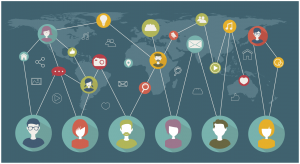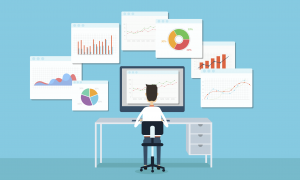What exactly does “shopper marketing” mean?
It’s any marketing stimulus designed to persuade the shopper to buy. And in order to move a shopper towards a path to purchase we must know how consumers make decisions and understand the shopping from the shopper’s point of view.
There are some differences between shoppers and consumers and we try to explain that to a better understanding. Actually, it’s the same person but in different moments: consumers become shoppers when they decide to buy something. Consumers are open to stimulus, interact with brands and receive information while shoppers recognize a need and decide to make a purchase to cover this need.
Stages of the Buying Process
All about this shopping process starts with a buying decision (awareness of need) and end with Post-purchase stage where shoppers evaluate the purchase in a positive or negative reaction. If the shopper is satisfied, then probably there will be a repurchase but if the shopper is unsatisfied, you have to be ready for negative word of mouth and respond immediately with a proper message.
John Dewey introduced in 1910 five stages of the buying process but Professor Barbara Kahn from Wharton University added two more stages and we think this completes the whole picture. These are:
Understanding your customer’s buying process is not only important to analyze customer behavior, it will also let you refine and redirect your sales strategy.
Consumer Behavior in an Omni-channel world
We live in a connected world and the shopping process is a multi-staged/multi-channeled process.
The customer journey has become more complex and customers make decisions in store, online and using mobile devices (smartphones, tablets, phablets). Furthermore, it’s a 24/7 process and we really need to understand the customer decision-making process in order to build strong brands. Some questions to consider in this section:
- Where do they buy? (At work, at home, on the go, etc.)
- How do they buy? (Smartphone, tablet, online store, physical store, etc.)
- When do they buy? (In the morning, in the afternoon, in the evening, etc.)
- What do they buy and how often? (Product, frequency, etc.)
 Once you answer some of these questions you need to analyze this information and make a route map of your customers in order to understand their needs and bring them what exactly they want at the right moment.
Once you answer some of these questions you need to analyze this information and make a route map of your customers in order to understand their needs and bring them what exactly they want at the right moment.
Consumer Behavior and Triggers
And to begin a shopping process we need a trigger. We will explain some triggers that retailers should consider:
- Create Shopping goals: something that reminds the consumer of an event; it’s a purchase occasion (Holiday, Easter, Halloween, etc.)
- Create emails / push notifications / proximity-based notifications: a special sale, a welcome email or notification, new product, etc.
- Create Urgency: create a need in the consumer to make a purchase (online flash sales, offline special offers, etc.)
- Create Reminder notices: remind customer to come in and buy again.
- Create events: Fashion shows, charity events, etc.
- Create a conversation: have a dialogue with consumers and shoppers in different ways using social media to trigger the shopping process.
Including triggers in your marketing strategies will help you to drive attention by delivering value information to your customers and get more conversions.
Connect Online with Offline Experience
In today’s world, new technology allows retailers to follow customers in the store, online and through their apps, obviously only if they give their permission. This is an important tool that we think marketers have to explore and make the most of.
A great example of this is the case of Apple. They create brand awareness by creating flagship stores. They control the entire shopping experience by putting in the customer’s hands a variety of services that connect the online world with the offline experience.
For instance, Genius Bar is a tech support station located inside some Apple retail stores. You make an appointment through the Apple web site.
Then, when you arrive at the store, the Apple store app locates your current position and you confirm your arrival or a friendly Apple employee looks up your appointment, escorts you to a chair at the Genius bar and you wait.
And while you are waiting your turn, looking around you can see showcase products (where you can touch and play with Apple devices), screens with tricks and tips for Apple products and if you like something in the store you just scan the barcode and pay with your phone (Apple Store App), just that simple!. A boring wait could turn into quite a fun experience.
Apple creates a unique experience and most marketers have realized that many people are willing to pay a premium price for a product or service that gives them this real and unique experience.
Consumer Behavior and Big Data Analytics
As we said, new technology allows retailers to follow customers and that is where big data analytics plays an important role.
Big data is characterized for three very important variables: quantity, quality and time. It allows you to manage and analyze large volumes of information in a short time or even better in real time. It’s also scalable, that means that this technology has the ability to increase in size, as demand needs.
The big data market is set to increase from $3.2 billion in 2010 to $16.2 billion in 2015 according to a study research from Mckinsey&Company. Shopper marketing is a strong growth industry, with some studies estimating that investment in shopper marketing is increasing faster than investment in advertising online. Many companies are investing in analytics because they realize that improved analytics could help marketers optimize their marketing mix and save money. Furthermore, building loyalty programs based on purchase data and customer segmentation generates better outcomes.
By using online data, in store data, app data, location information and predictive analytics, marketers can display personalized recommendations and can better predict how consumers will respond to marketing strategies.







